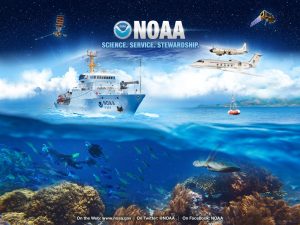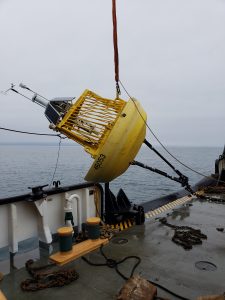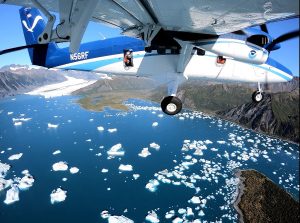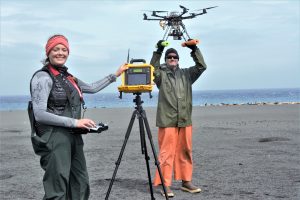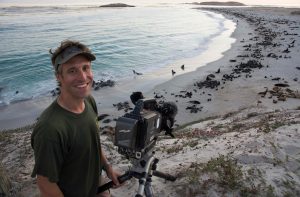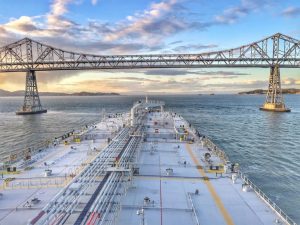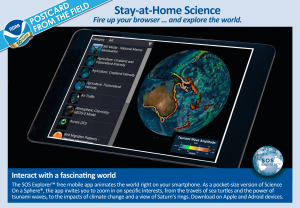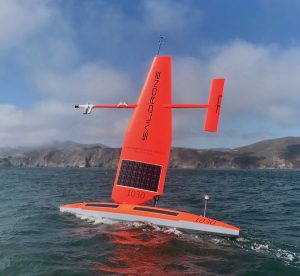Help from above – using planes, drones, and satellites to study and protect plants and animals **Smithsonian National Air and Space Museum NOAA Family Day**
NOAA Live! All Stars: Katie Sweeney, NOAA’s Alaska Fisheries Science Center in Seattle, WA Allison Henry, NOAA’s Northeast Fisheries Science Center in Woods Hole, MA Brandon Krumwiede, NOAA’s Office for Coastal Management in Duluth, MN Jennifer Stock, NOAA’s Cordell Bank National Marine Sanctuary in Point Reyes, CA In partnership with the Smithsonian National Air and Space Museum. This…
Read MoreNOAA Buoys Around the World
Lieutenant Lauren Jarlenski and Dawn Petraitis, NOAA’s National Data Buoy Center at the Stennis Space Center in Kiln, MS Join us for a whirlwind adventure across the globe as we explore how NOAA’s National Data Buoy Center builds and deploys buoys to monitor ocean and weather events. Learn about our tropical atmosphere ocean buoys, tsunami…
Read MoreScience in the Sky: How NOAA’s Aircraft Operations Center supports research from 500 to 45,000 ft.
NOAA’s Aircraft Operations Center in Lakeland, FL Want to fly with NOAA? NOAA aircraft are used to measure conditions in a hurricane, count marine mammals, map our coastline, and even measure water content in snow. NOAA’s Aircraft Operations Center manages, operates, and maintains 10 specialized aircraft to support NOAA research. Come and learn about our…
Read MoreDrones, Scat, and the Joys of Marine Mammal Fieldwork in Alaska
Katie Sweeney, NOAA Fisheries Alaska Fisheries Science Center in Seattle, WA How do we study marine mammals and what do we find out? Take a journey through the types of surveys and tools that are used to study Steller sea lions and northern fur seals in Alaska, and the challenges faced by scientists who study…
Read MoreDemystifying Science through Video
Filmmaker Paul Hillman, NOAA Fisheries Communications Office in Seattle, WA Science can be a tough nut to crack for a lot of people, and sometimes getting the information straight from a scientist can be full of technical jargon and difficult to understand. But science is the backbone for many of the decisions and policies that…
Read MoreHelping Big Ships Bring Goods into Port So You Can Have What You Need
Kyle Ward and Louis Licate, NOAA’s Office of Coast Survey in Charleston, SC and Miami, FL Scientists, engineers, and mariners use NOAA’s products and services to slide underneath bridges, navigate tight turns, and dock alongside ports so that everything from groceries to games are available in stores for you to use. Come learn about how…
Read MoreExplore the World with NOAA’s Fun, New App
Hilary Peddicord and Beth Russell, NOAA’s Earth System Research Laboratories in Boulder, CO The SOS Explorer™ free mobile app animates the world right on your smartphone. As a pocket-size version of NOAA’s Science On a Sphere®, this free app invites you to zoom in on specific interests, from the squiggly warm and cold lines of…
Read MoreAlaska Week: Uncovering the Seafloor – Charting Alaska’s Waters
Lieutenant (junior grade) Michelle Levano and Pete Holmberg, both from NOAA’s Office of Coast Survey in Seattle, WA How do we collect information on ocean depths, and how does that information get on paper? It’s important for us to measure water depths and features to keep ships safe and help them navigate and sometimes we…
Read MoreAlaska Week: Flying Beneath the Clouds at the Edge of the World
Katie Sweeney, NOAA’s Marine Mammal Lab in the Alaska Fisheries Science Center in Seattle, WA Do you have a toy drone at home? Join in to learn about how the Marine Mammal Lab is using drones for learning more about wildlife. The Alaska Ecosystem Program studies Steller sea lions in Alaska using drones and we’re…
Read MoreSaildrones – Sailing the Seas for Science
Heather Tabisola, NOAA’s Pacific Marine Environmental Laboratory in Seattle, WA Have you ever seen a drone? Some people think they look like helicopters. But not all drones fly! Some sail across the water, powered by wind, collecting information on the ocean and atmosphere as they go. In this webinar, you will talk to a NOAA…
Read More
